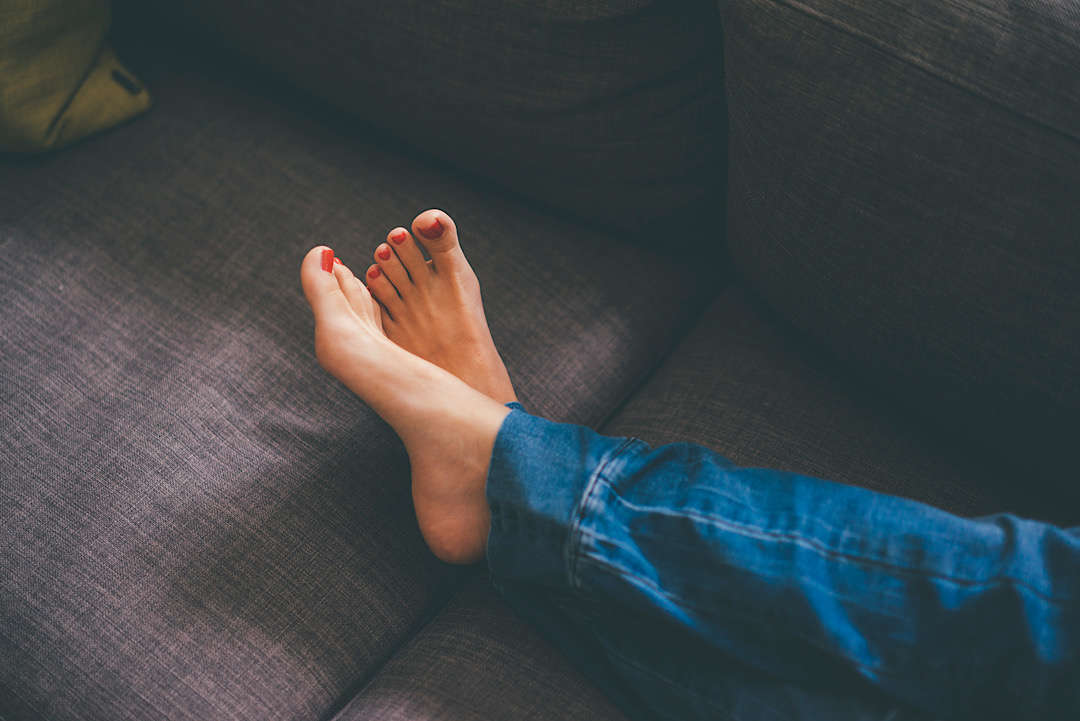Jordan Galloway – 5h ago
© Photo: Getty Images/ Westend61
Here’s something you may not know: All babies are born with flat feet, but most people develop an arch at some point in childhood. Unfortunately, due to natural wear and tear, as well as weight fluctuations— like during pregnancy—or certain health conditions—including high blood pressure, diabetes, or rheumatoid arthritis—about five million Americans wind up with adult-acquired flat feet (aka fallen arches).
It can be painful, to put it mildly, and feel similar to plantar fasciitis. So knowing what stretches, exercises, and shoes are helpful for alleviating symptoms comes in handy. But to rebuild your internal arch, you may also want to start practicing “toe yoga,” a technique physical therapists use to help patients increase mobility and build up the intrinsic muscles in their feet.
But you don’t need flat feet to reap the benefits. Physical therapist Diana Zotos-Florio, CSCS, a certified yoga teacher and co-founder of Threes Physiyoga Method (a movement practice that combines yoga with PT principles), says everyone can benefit from doing this move. “In the arch of the foot, there are a ton of different bones,” she explains, “and this is a beautiful thing because all the bones help to create a lot of different mobile joints. Our feet are meant to be adaptable to the surfaces that we walk on. If the bones of the foot are really flat, or even really stiff with a high arch, the bones aren’t mobile, then the muscles can’t work. It’s like if your elbow was locked at 90 degrees—the bicep wouldn’t really be able to do its full range of motion.”
Without proper mobility in the foot, common movement patterns like walking, running, or even standing become compromised, leading to imbalances in other areas of the body. “So if our feet are super rigid, like little planks, when we walk, the force of our body wouldn’t be absorbed well, and we’d get pain in our knees, hips, and feet,” Zotos-Florio says. One solution is strengthening the infrastructure of the foot, which is where toe yoga comes in.
What is toe yoga?
Essentially, toe yoga is a type of strength and mobility training for your feet. “What toe yoga does is help to train some of the really deep muscles that connect all the bones that make up the arch,” Zotos-Florio explains. “The arch of the foot exists because of the tone of the muscles, so if the muscles aren’t working, the arch won’t exist. And having an arch is important because that’s how we transfer load across the whole foot.”
How to do toe yoga
Unlike, say inversions or arm balances, practicing toe yoga is pretty simple, but you may find it challenging at first, depending on the amount of mobility you have in your feet. You can do it while standing or sitting in a chair, and should work on one foot at a time.
- To begin, Zotos-Florio says you must first start in a tripod foot position, meaning your weight is evenly distributed between your big toe knuckle, pinky toe knuckle, and heel. Often, people over-pronate, meaning they put more weight on the big toe-mound side of their foot, which can also lead to flat feet, according to Zotos-Florio.
- Once you’re found your tripod footing, the next step is to lift all five toes up off of the floor.
- “Then, spread your toes apart as far as you can—even think about extending them out of their sockets, like you’re lengthening your toes,” Zotos-Florio says.
- While maintaining your tripod, try to lay one toe down on the floor at a time. “You shouldn’t be gripping your toes while you’re doing this; you shouldn’t be digging them into the floor. It’s almost like you’re palming the floor with your foot the way you would a basketball.”
At first, this can be hard to do, especially if you typically pronate, says Zotos-Florio. “It can be extremely challenging because those muscles haven’t been working for a long time, so not only are they not functioning, but your brain isn’t talking to them. So just as much as this is a muscular effort exercise, it’s reestablishing neuromotor skills.” But the good news is, with repetition, you can rebuild that brain-body connection quicker.
How often to practice toe yoga for best results
To really build strength and mobility in your feet and reinforce the signals your brain’s sending to your soles, Zotos-Florio recommends doing toe yoga twice a day for two minutes on each side. “I would link it to another habit,” she suggests. “Like, ‘I brushed my teeth, and now I’m going to spend two minutes on each foot doing this.’”
She also recommends rolling a small massage ball under your foot first—back and forth across the ball of the foot, then up and down from the heel to each separate toe. “Just to wake up all the appropriate receptors and light up the foot in your brain,” Zotos-Florio says. If you’re a visual person, Threes Physiyoga has a whole virtual class dedicated to functional foot exercises.
